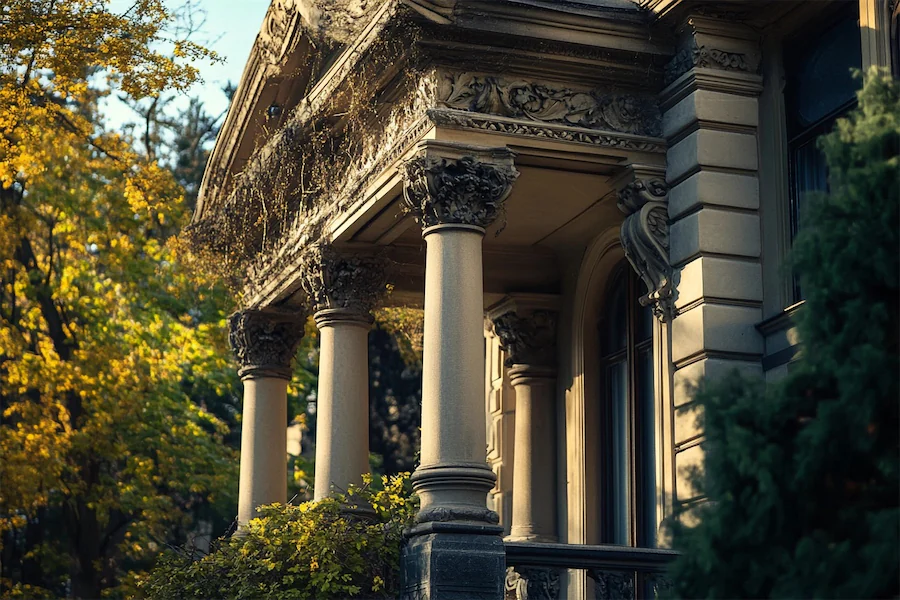Victorian columns are a distinctive feature of Victorian architecture, which flourished during Queen Victoria’s reign from 1837 to 1901. This era saw a resurgence and eclectic combination of various architectural styles, leading to the incorporation of diverse column designs that added elegance and grandeur to buildings.
History and Origins of Victorian Columns
The Victorian period was marked by rapid industrialization and a fascination with historical architectural styles. Architects drew inspiration from Gothic, Romanesque, Renaissance, and Classical designs, adapting and combining elements to create unique structures. Columns became prominent features in both residential and public buildings, serving structural purposes and as decorative statements reflecting the eclectic tastes of the era.
Key Features of Victorian Columns
Victorian columns exhibit a variety of characteristics, influenced by the multiple styles embraced during the period:
- Turned and Chamfered Posts: In residential architecture, especially in porches, turned (lathe-shaped) and chamfered (beveled-edge) posts were common. These posts often featured intricate designs, adding to the ornate appearance typical of Victorian homes.
- Classical Orders: Victorian architecture often incorporated classical elements such as columns and porticos. While Gothic forms were gaining popularity, classical elements like columns remained prevalent, showcasing the era’s eclectic approach to design.
- Decorative Capitals and Bases: The capitals (tops) and bases of Victorian columns were frequently adorned with elaborate carvings and motifs, including floral patterns, scrolls, and other intricate details, reflecting the era’s emphasis on ornamentation.
Applications of Victorian Columns
Victorian columns were utilized in various architectural contexts:
- Residential Architecture: In homes, especially those featuring wrap-around porches, columns provided structural support and contributed to the inviting and ornate aesthetic characteristic of Victorian design.
- Public and Institutional Buildings: Columns were employed to convey grandeur and stability in structures such as museums, town halls, and educational institutions. For example, the Natural History Museum in London showcases Victorian columns with intricate stonework, exemplifying the era’s architectural ambition.
Considerations When Choosing Victorian Columns
When incorporating Victorian columns into architectural designs, consider the following:
- Material Selection: Traditional materials included wood and stone, with cast iron becoming popular due to industrial advancements. The choice of material affects durability, maintenance, and the overall aesthetic.
- Stylistic Consistency: Ensure that the column design aligns with the specific Victorian style being emulated, whether it be Gothic Revival, Italianate, or Queen Anne, to maintain architectural coherence.
- Ornamentation Level: Victorian architecture is known for its elaborate details. The extent of ornamentation on columns should complement other design elements without overwhelming the overall composition.
Conclusion
Victorian columns are emblematic of the era’s architectural diversity and decorative richness. Their varied designs and applications continue to influence architectural practices, offering timeless elements that blend historical reverence with aesthetic appeal.
